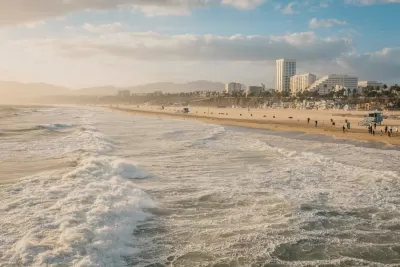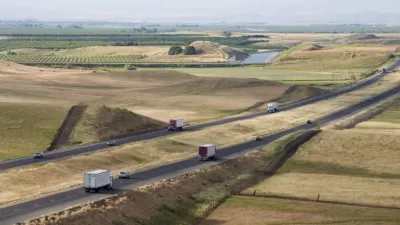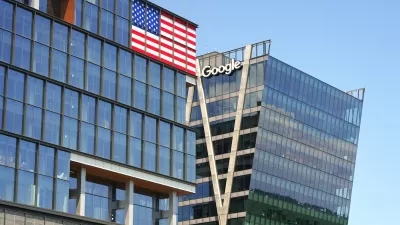This is a story about green building practices, conservation, and rainwater capture—not desalinization.

Matt Weiser reports on the water conservation efforts of Santa Monica—where the city has pushed on as if the state of California's historic drought never ended. The article includes an in-depth question and answer session with Dean Kubani, chief sustainability officer of Santa Monica.
Kubani describes an approach to water conservation that includes real penalties for exceeding allowances, generous incentives for drought-tolerant landscaping, and a water neutrality ordinance that requires any new development and major renovations not exceed current water usage.
Kubani explains how the city decided to keep those programs in place, even after last year's exceptionally wet rainy season:
So when the state declared the drought was over, Santa Monica chose to keep the water-use allowances, the incentives and everything in place and move forward. And we’re still at 20 percent below our baseline water use, which was set in 2013.
The city of Santa Monica set a goal to wean itself off imported water by 2020, meaning it would stop using imported water from the Colorado River and Northern California, supplied by the Metropolitan Water District of Southern California. To increase its local water supplies, Kubani says the city has groundwater wells and is in the process of constructing 6 million gallons of water supply capacity in underground cisterns.
Currently the city is importing 30 percent of its water supply, and Kubani is optimistic the city can reach, or very nearly reach, its goal of ending water imports by 2020.
FULL STORY: Santa Monica Prepares to Eliminate Water Imports, Drought-Proof Supply

Alabama: Trump Terminates Settlements for Black Communities Harmed By Raw Sewage
Trump deemed the landmark civil rights agreement “illegal DEI and environmental justice policy.”

Study: Maui’s Plan to Convert Vacation Rentals to Long-Term Housing Could Cause Nearly $1 Billion Economic Loss
The plan would reduce visitor accommodation by 25% resulting in 1,900 jobs lost.

Why Should We Subsidize Public Transportation?
Many public transit agencies face financial stress due to rising costs, declining fare revenue, and declining subsidies. Transit advocates must provide a strong business case for increasing public transit funding.

Wind Energy on the Rise Despite Federal Policy Reversal
The Trump administration is revoking federal support for renewable energy, but demand for new projects continues unabated.

Passengers Flock to Caltrain After Electrification
The new electric trains are running faster and more reliably, leading to strong ridership growth on the Bay Area rail system.

Texas Churches Rally Behind ‘Yes in God’s Back Yard’ Legislation
Religious leaders want the state to reduce zoning regulations to streamline leasing church-owned land to housing developers.
Urban Design for Planners 1: Software Tools
This six-course series explores essential urban design concepts using open source software and equips planners with the tools they need to participate fully in the urban design process.
Planning for Universal Design
Learn the tools for implementing Universal Design in planning regulations.
Caltrans
Smith Gee Studio
Institute for Housing and Urban Development Studies (IHS)
City of Grandview
Harvard GSD Executive Education
Toledo-Lucas County Plan Commissions
Salt Lake City
NYU Wagner Graduate School of Public Service





























